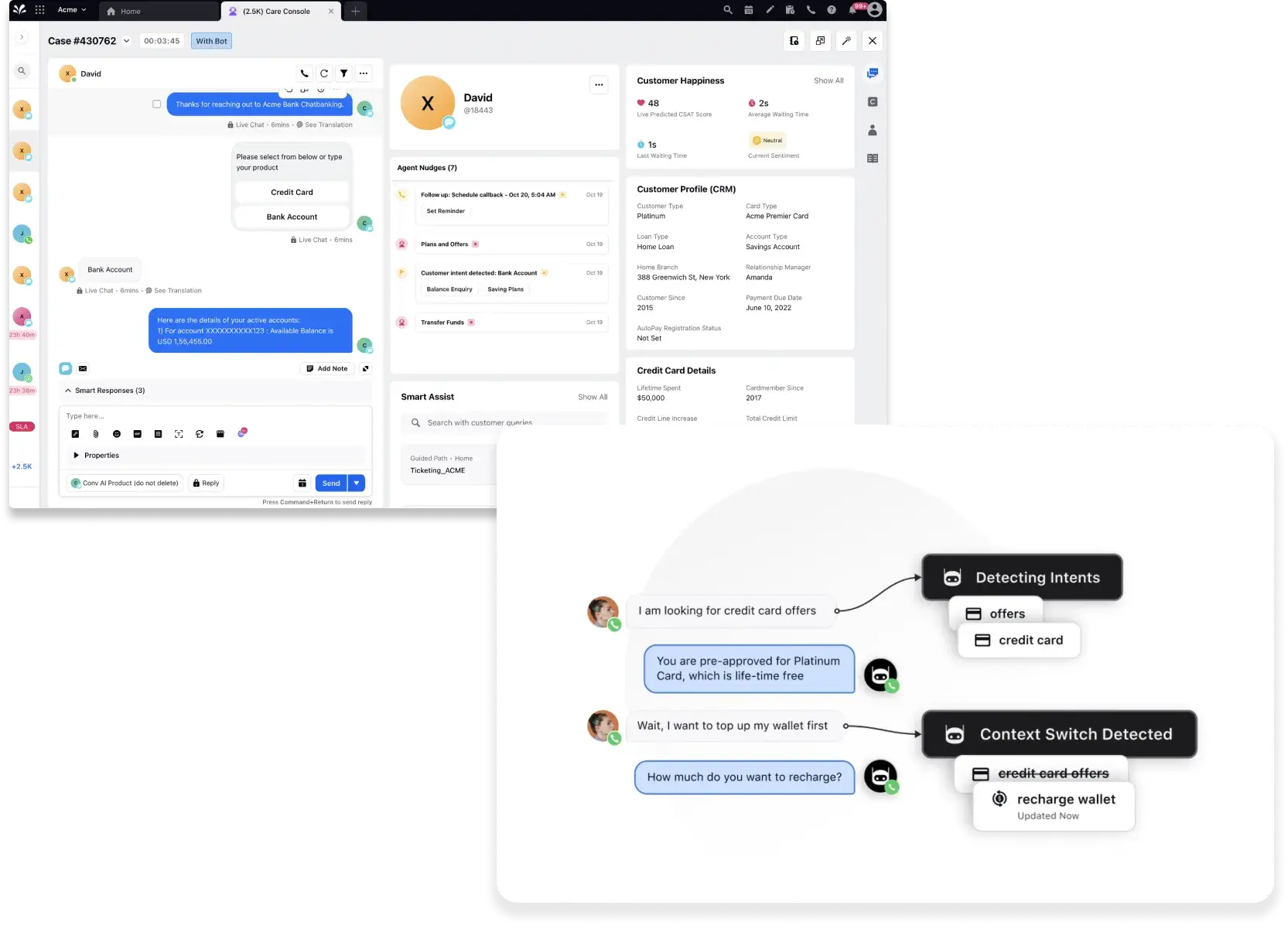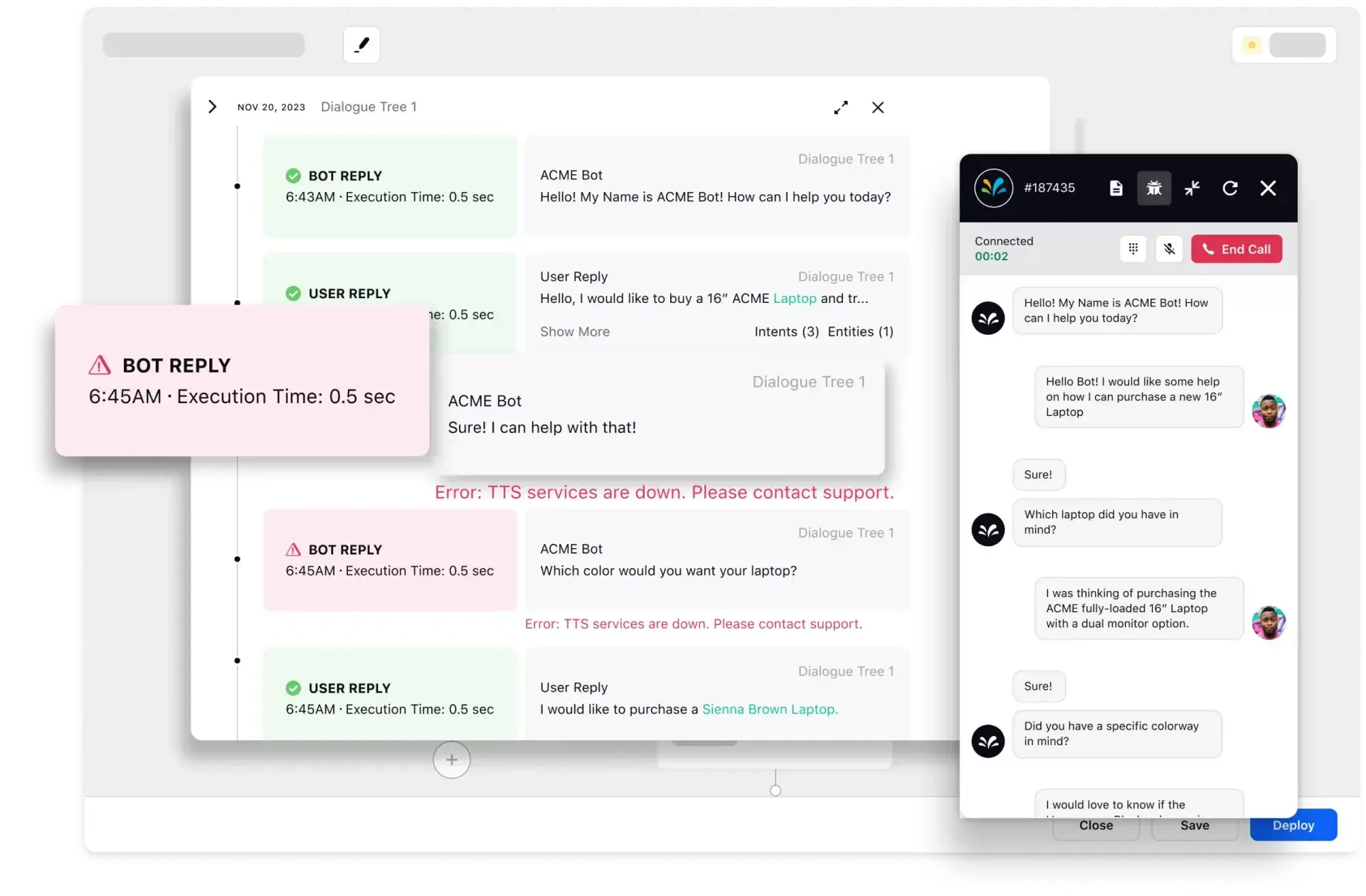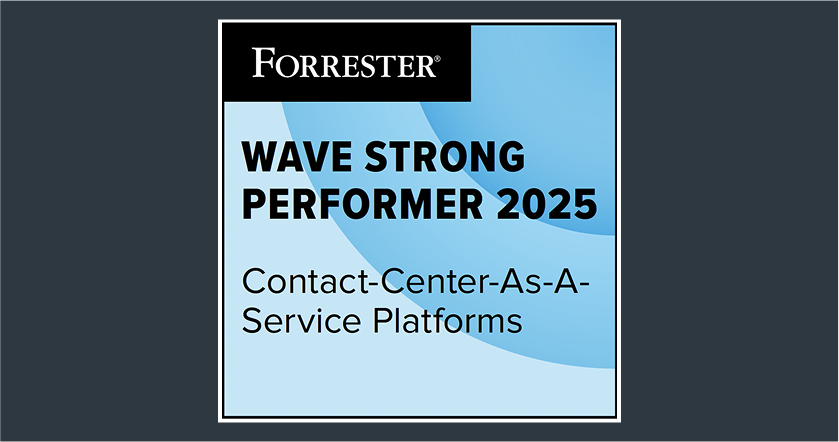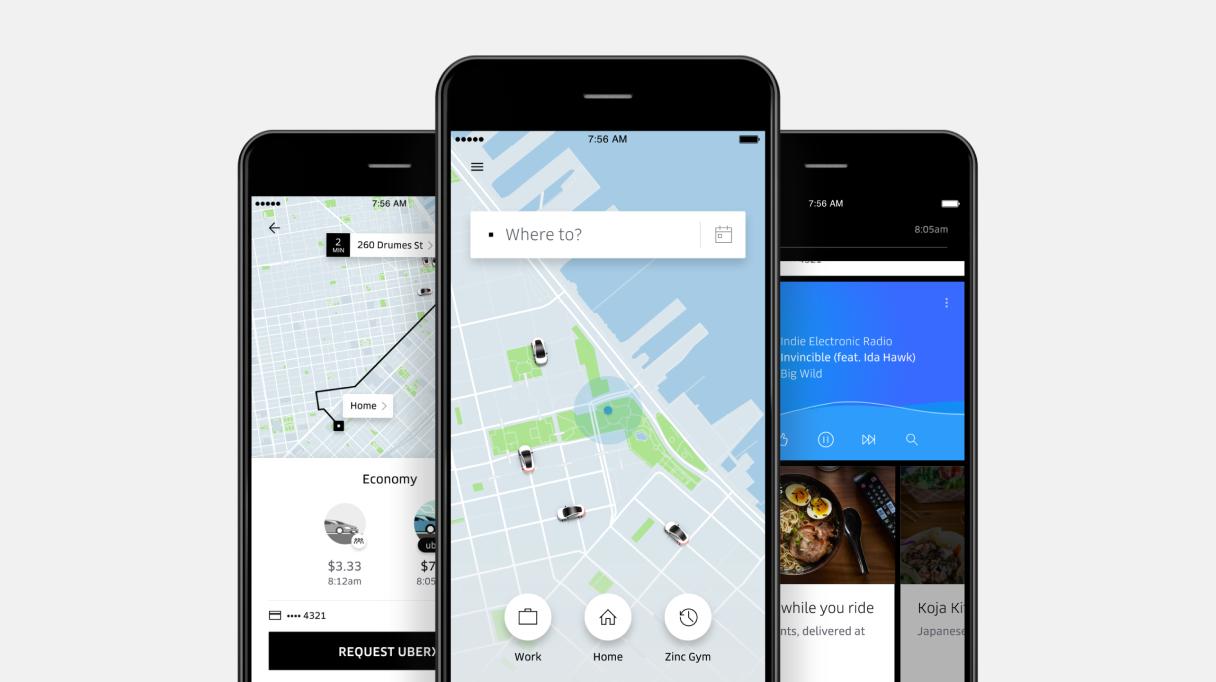What is customer relations?
Customer relations is about nurturing and managing the ongoing interactions between your business and customers. It is more than just answering questions — it is about creating positive experiences that build trust and loyalty. Whether it’s offering personalized customer service, seamless communication or proactive issue resolution, customer relations fuel long-term relationships with your brand.
However, customer relations aren’t led by just one department. It’s a collaborative effort involving your customer service, sales, marketing and product development teams. They bridge your business and customers together, meeting customers’ needs and concerns.
In the past, customer relations were often limited to basic customer service — handling complaints and queries via phone or in-store visits. However, today’s customers expect much more than quality products. They demand personalized, seamless experiences, swift responses and meaningful interactions that reflect their preferences and values.
Key activities in modern customer relations
Building strong, lasting customer relationships requires strong customer focus. Here's how businesses typically operate in this regard.
✅ Providing omnichannel customer service: Deliver support across multiple customer service channels, including phone, email, live chat and social media. Meet customers wherever they are.
✅ Streamlining customer interactions: Ensure every customer touchpoint is smooth, hassle-free and perfectly aligned with customer expectations.
✅ Optimizing customer touchpoints: Enhance every stage of the customer journey to boost customer satisfaction and build loyalty.
✅ Personalizing customer experiences: Use customer data and insights, such as purchase history, browsing behavior and demographic information, to tailor interactions and offerings, creating more relevant and engaging experiences.
✅ Analyzing customer feedback: Regularly gather and assess feedback through customer surveys, social listening and direct customer interactions to improve products and services and create delightful customer experiences.
✅ Managing relationships proactively: Anticipate customer needs and reach out to address them before they escalate into issues, such as service disruptions or product malfunctions.
Customer relations vs customer service
Customer relations and customer service have different objectives from a business’s perspective when catering to customers. Let’s iron out the differences to clear up any confusion:
Aspect | Customer relations | Customer service |
Definition | The ongoing management of all customer interactions between a business and its customers to build long-term relationships | The assistance provided to customers before, during and after purchasing a product or service |
Focus | Proactively nurturing customer loyalty and trust through consistent customer engagement across various customer touchpoints | Reactively solve customer issues, answer questions and provide support during interactions |
Scope | Broad, involves marketing, sales, customer service and product teams to align the entire customer journey | Narrow, primarily focused on addressing customer needs or issues as they arise |
Objective | Building lasting relationships that lead to customer retention, brand advocacy and long-term growth | Ensuring customer satisfaction by resolving immediate problems or concerns |
Example | Implementing a loyalty program that rewards customers for long-term engagement and offers personalized incentives | Handling a customer’s return request promptly and efficiently to ensure their immediate satisfaction |
Engagement approach | Proactive, aims to anticipate customer needs and exceed expectations. | Reactive, focuses on responding to customer inquiries or complaints as they occur. |
Top benefits of strong customer relationships
Building strong customer relationships is a strategic necessity due to fierce competition and diminishing product differentiation. Let’s examine how building strong customer relationships can help.
📈Boosted customer lifetime value (CLV)
When you build strong relationships, customers are likelier to stick around, make repeat purchases and increase their overall spending with your brand. This directly boosts their customer lifetime value.
Interestingly, according to Gartner Digital Markets, 25% of marketers rank CLV among their top five metrics for assessing and increasing the efficacy of their outreach campaigns. Customers who see more value in your offerings and trust your brand are more likely to return. This means more consistent revenue over time.
📚Related Read: What is Customer Value: Importance, Types and Tips.
🤝Increased customer loyalty
Strong customer relationships foster loyalty. When customers feel valued and understood, they develop an emotional connection with your brand, making them less likely to switch to competitors.
Take Zappos, for instance. It has cultivated such strong loyalty by prioritizing customer service that customers keep returning, even if a competitor offers similar products at a lower price. Reports suggest that 82% of customers will return if they receive value during a service interaction, even if your prices are high or a competitor has a similar product. It’s not just about the product; it’s about the trust and rapport you’ve built.
🧑🤝🧑Enhanced customer retention
Customer retention management is far more cost-effective than acquisition. Focusing on solid customer relationships can significantly reduce churn rates. Regular engagement, personalized experiences and consistent support all contribute to keeping customers satisfied and loyal over the long term.
🏅 Improved brand reputation
Satisfied customers are your best advocates. They’re more likely to spread positive word-of-mouth recommending your brand to others. This kind of advocacy doesn’t just enhance your reputation — it attracts new customers who trust the opinions of their peers. A strong brand reputation built on solid customer relationships can be a significant differentiator in a crowded market.
Good Read: How Should Brands Manage Their Online Reputation
5 effective strategies to build and manage customer relations
Your customers are constantly communicating — are you truly listening? Building strong customer relations involves more than just basic customer interactions. It requires a more profound customer connection and a commitment to understanding their needs. Let’s explore five strategies that will help you connect, engage and build lasting relationships with your customers:
1. Understand your customers
To truly connect with your customers, it’s essential to go beyond surface-level demographics and dive deep into their preferences, behaviors, pain points and desires. The more you understand what drives your customers, the better equipped you are to tailor your products, services and interactions to meet their unique needs and exceed their expectations.
Failing to understand your customers can lead to miscommunication, unmet expectations and, ultimately, lost business. Take Netflix, for example. It excels at understanding its customers through advanced algorithms that track viewing habits, preferences and active hours. This allows Netflix to provide personalized recommendations and create content that resonates with its audience, leading to higher customer satisfaction and retention.
💡 Pro Tip
To deepen your understanding of customer needs and enhance your ability to address them effectively, consider investing in conversational analytics software. Modern platforms powered by generative AI offer a significant advantage in analyzing customer interactions. These tools can detect root causes, anomalies, trends and critical themes in real-time conversations.
For example, AI can swiftly identify recurring issues such as "delivery problems" or "pricing concerns." By leveraging these consumer insights, you can anticipate customer needs more accurately and proactively address common concerns.

2. Select the right communication channel
It’s crucial to reach customers on the platforms they use. With so many communication channels available — social media, email, live chat, phone and more — choosing the ones that align with your customers’ preferences is vital. Analyzing consumers’ response patterns can help identify the best channel.
Using the wrong channels can lead to missed opportunities, such as slow response times, miscommunication and lost trust. For instance, a food delivery business could prefer phone calls or live chats to emails.
💡 Pro Tip
Don’t put all your eggs in one basket when it comes to communication channels. Train your team to handle inquiries across multiple platforms. Better yet, opt for omnichannel customer service. This approach ensures seamless customer communication across all channels, even if technical issues arise or there’s a surge in traffic. Your customer relations will remain stable, responsive and reliable no matter what.
3. Train your agents
Your contact center agents are the frontline workers of your customer relations strategy. Invest in comprehensive contact center training that covers product knowledge and essential soft skills, like active listening and empathy, to maintain high customer service standards. These skills are crucial for building trust and ensuring positive customer interactions.
Well-trained employees can confidently address customer queries and resolve issues, reducing the chances of miscommunication and customer frustration. Continuous training is just as vital. As customer expectations and technologies evolve, your training programs should adapt accordingly. This approach keeps your team prepared to deliver exceptional service in any situation.
4. Enable self-service options
Understanding that customers typically reach out only when they face an issue or have a query is key to managing customer relations effectively. As a business, it's essential to anticipate the challenges your customers are likely to encounter throughout their journey. By doing so, you can implement proactive measures that optimize customer service operations and remain cost-effective.
One effective strategy is empowering customers to handle their queries independently through self-service features. Options like knowledge bases, FAQ chatbots and customer service chatbots enable customers to resolve their issues without needing to wait for a support agent. This approach accelerates problem resolution, leading to happier customers. It also reduces the workload on your support team, allowing them to focus on more complex issues.
For instance, Zoom offers an extensive online help center with guides, tutorials and troubleshooting tips. This self-service approach proved invaluable, particularly during the surge in remote work triggered by the global pandemic, as it guided users through the platform with minimal need for direct support.

5. Collect and analyze feedback
Feedback is the voice of your customers; ignoring it is akin to flying blind. Collecting and analyzing feedback is crucial for building strong customer relations. It provides deep insights into customer sentiments, helps you identify pain points and uncovers opportunities for improvement. When customers see that their feedback is valued and acted upon, it leads to higher engagement and loyalty.
For example, Spotify continuously leverages customer feedback to refine its algorithms and enhance the user experience. By analyzing trends and listening closely to what users want, Spotify has fine-tuned its product offerings, enabling it to retain a large and loyal customer base despite fierce competition.
💡 Pro Tip
Conduct customer satisfaction surveys at key touchpoints, like after a purchase or a support interaction. These survey tools also analyze sentiment to gauge the tone and emotion behind customer feedback, allowing you to prioritize issues that most impact customer satisfaction.
3 ways to leverage technology for seamless customer relations
To create a compelling and actionable section on leveraging technology for seamless customer relations, consider the following three strategies.
1. Utilize AI-powered insights for meaningful conversations
AI-driven contact center analytics tools are revolutionizing customer relations by offering deep insights into customer behavior, preferences and sentiment. By analyzing vast amounts of data from various touchpoints — social media interactions, purchase history, customer feedback and more — AI can help you anticipate customer needs and personalize interactions at scale. Similarly, tools like predictive analytics can forecast customer trends, enabling you to proactively address potential issues or tailor offerings to individual preferences, thus strengthening customer relations.

2. Onboard customers effortlessly with Conversational AI
The onboarding process is the customers' first significant interaction with your brand, making it a critical moment in the customer experience journey. A smooth, efficient customer onboarding can set the stage for a positive relationship, while a cumbersome one can create frustration and disengagement.
How conversational AI enhances onboarding:
Personalized interactions: Conversational AI can tailor the onboarding process to customers' unique needs and preferences. By analyzing customer data, AI-driven chatbots can guide customers through onboarding, providing personalized recommendations, answering specific questions and addressing concerns in real time. This level of customization helps customers feel valued from the outset.
24/7 availability: Unlike traditional onboarding methods that rely on human agents, AI-powered solutions are available around the clock. This ensures customers can complete their onboarding at their own pace and convenience, regardless of time zones or business hours.
Streamlined processes: If you run a business that requires extensive customer information and verification, Conversational AI can automate repetitive tasks during onboarding, such as form-filling, account setup and document verification. By handling these routine activities, AI speeds up the onboarding process, reducing friction and making it easier for customers to get started with your product or service.
😊 Good to know
Achieving a seamless and unified brand experience across all customer touchpoints is simpler than you might think with Sprinklr's Conversational AI software.
Because you can design a brand-compliant chatbot and deploy it across over 25 channels—including voice — and in more than 100 languages. This ensures your customers receive a consistent and personalized experience no matter where they interact with your brand.
What’s more, these bots seamlessly integrate with your existing customer service workflows. They work in conjunction with call routing and customer case management systems, allowing for smooth escalation to the right agents while preserving complete context.

3. Leverage automation for efficient service delivery
Customer service automation such as chatbots, automated workflows and self-service portals, are essential for providing quick and efficient customer service. These tools can handle routine inquiries, guide customers through common issues and even facilitate transactions without human intervention. By automating these tasks, you free up your support team to focus on more complex and personalized customer interactions, thus enhancing the overall customer experience.
In a crowded marketplace where customers are bombarded with countless options, standing out requires more than just offering a great product. It demands a genuine commitment to understanding and consistently meeting their needs.
Many businesses face the challenge of finding the right tools to manage and nurture these crucial customer relationships effectively. This is where Sprinklr Service comes in. It provides a comprehensive solution to attract new customers and engage and retain them over time.
Book an expert-led demo today to discover how Sprinklr Service can help you effortlessly build lasting customer relationships, setting you apart as a brand that truly cares.
Frequently Asked Questions
Thank you for contacting us.
A Sprinklr representative will be in touch with you shortly.
Contact us today, and we'll create a customized proposal that addresses your unique business needs.
Request a Demo
Welcome Back,
No need to fill out any forms — you're all set.








